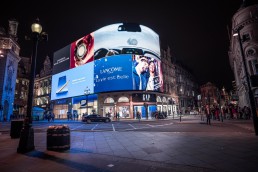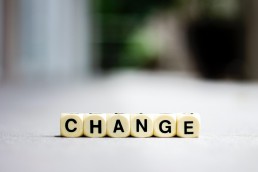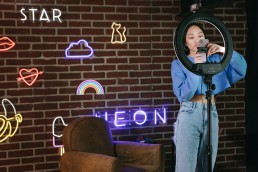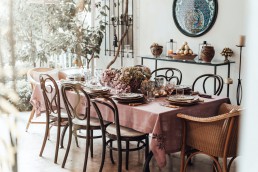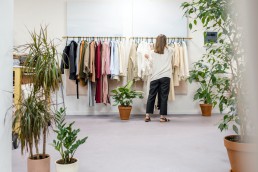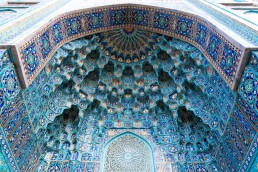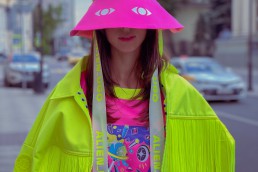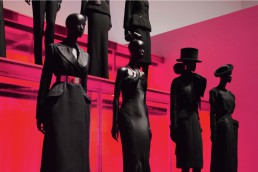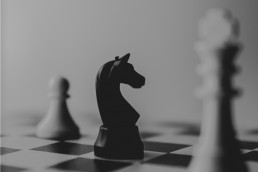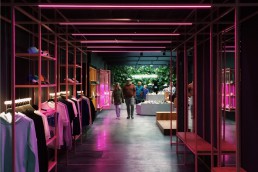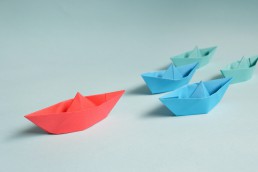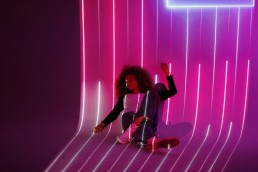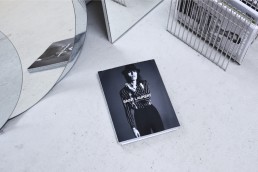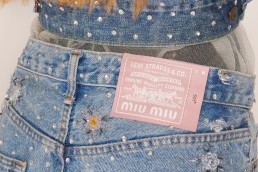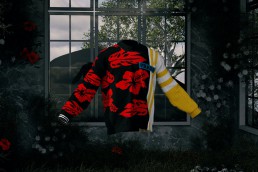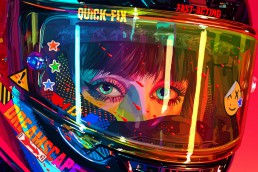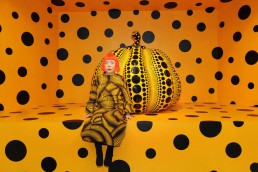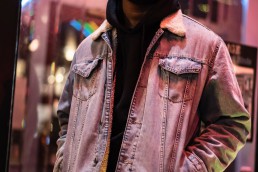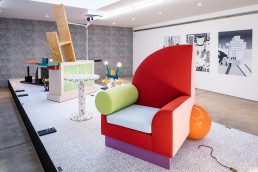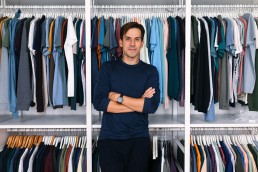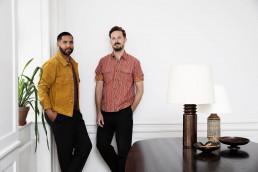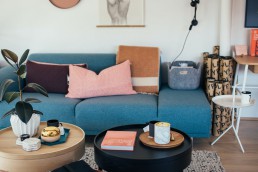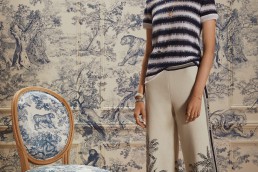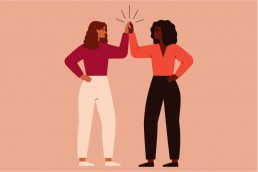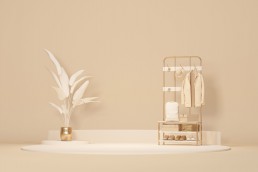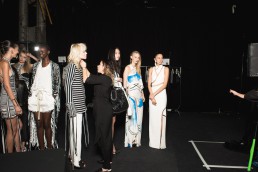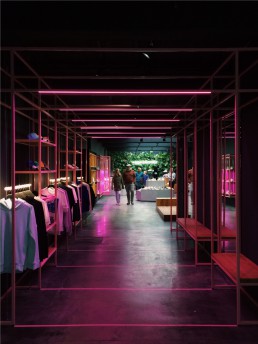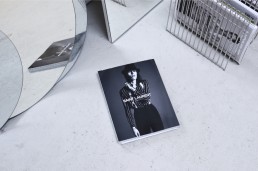Get Into Business: A Quick Guide to Cluster Platforms for Designers and Startups
Entrepreneurship, creativity and innovation are key factors for any lifestyle business’ path to success. However, strategic tools and mentorship are needed to strengthen the core business operations. Below are different types of platforms you can join to grow your brand.
Business operations and strategic management have been difficult tasks for creative-oriented professionals. It takes placing planning, sourcing and efficiency as top priorities within the organization to become a competitive fashion business.
To get on track, creatives are not alone, as many institutions and platforms around the world offer mentorships, access to training programs, and advisor counseling to guide them in this process.
Some cluster platforms group companies or startups with a focus on sustainability, others on the improvement of fashion's value chain (for supply and sourcing), some of them are innovation-oriented, either in the creation of materials or the value proposition and solutions they offer to the market.
This type of organization brings entrepreneurs and designers together, to share their experiences, learn from similar challenges, and create a support system environment to fulfill their company's purpose.
Knowledge transfer is possible, as it allows a very broad range of topics such as beneficial collaborations, market testing, and research outputs to refine their business models, accessing expertise and equipment of established firms.
Today we share some organizations and relevant programs for the growth of a lifestyle business company.
Fashion for Good
Fashion for Good is a global collaborative innovation platform to tackle the problems faced by the fashion industry.
They work alongside different agents bringing them together with innovators, manufacturers, and market players with the aim that they "collaborate effectively to bridge the innovation gap and bring these innovations to the mainstream”."These corporations benefit from innovation scouting and screening capabilities, comprehensive technology landscaping, and their hands-on support in piloting and scaling innovations.
Located in Amsterdam, Fashion for Good's Innovation Platform gives promising startups the support they need to grow and scale. The platform allows for innovators' introductions with brands, manufacturers, and access to the mentor and investor network. This way, entrepreneurs can benefit from expertise and funding, depending on the stage of maturity of their business idea, in addition to the opportunity to test their concepts with consolidated corporate partners.
Their Scaling Programme, on the other hand, supports market-ready innovators who have passed the proof-of-concept phase, and are ready to scale their innovations in the supply chain in partnership with large and industry players such as Adidas, C&A, Kering, PVH Corp, and Stella McCartney.
This kind of program offers deeper coaching, bespoke fundraising support, and hands-on guidance with these pilot projects.
Ethical Fashion Initiative
Ethical Fashion Initiative (EFI) supports African design talent and has been helping to bring African fashion design to the world stage since 2013. This initiative is targeting brands with innovative imagery, rich textiles, and skilled artisanal traditions for increasing the quality production, getting the financial support they need, and positioning themselves on the international landscape of fashion innovators.
EFI Designer Accelerator focuses on business development projects who require additional support to accelerate their businesses in the global marketplace committed to the UN's Sustainable Development Goals. To further propel these activities, EFI is engaged in expanding its partnership with a group of financial institutions to create an investment facility for new businesses in the African creative industry.
The program will help entrepreneurs in three key business areas: production support, business processes and strategy, and creating brand value. This training approach includes 1-1 mentoring, workshops, conferences, financial advice, digital strategies, and ways to improve their value chain.
Fashion Incubator San Francisco
Fashion Incubator San Francisco (FiSF) is an entrepreneurial innovative approach to business development. The Designer-In-Residence program offers fashion entrepreneurs the tools they need to scale their businesses in the long term, with personalized support, mentorship by industry experts, and networking events.
The incubator aims to help members to stay current on industry trends and bring together the regional design community, offering high-profile opportunities to showcase new lines and innovative design.
Fashion Incubator San Francisco is located on the first floor of Bloomingdale's in downtown San Francisco, the Incubator is housed in an industrial 1,500 sq. ft. studio workspace. Designers have access to cutting tables, sewing machines, a co-working space, a storage room, a fitting room for customer appointments, and an eat-in kitchen area. The Incubator also has a multi-purpose room that is used for photoshoots, seminars, meetings, pop-ups, and more.
If you are a startup or a fashion entrepreneur who wants to take the next step inside the fashion industry, there are different paths to pursue your career goals.
Educational tools such as an MBA in Fashion Businesses is a good choice and will create a solid base of knowledge, besides networking, and be aware of global institutions, as the ones described above, that can help you scale your business and make it grow.
How to Create a Strong Brand Personality
Branding and storytelling are key tools for building a brand. Strategic brand positioning is mandatory to set competitors apart and to create our unique brand proposition. Today we share useful tips in the process of creating a strong brand personality.
One of the first tasks of building a brand -besides product development- is to create a story around that product, to define it and to put into words the “reason-why” our future clientele is going to buy our offering.
However, before we create our signature story, we have to determine our brand’s tone and temperament, in other words, our personality, character, or mood, just as if our brand was a person.
According to Marketing Expert Jennifer Aaker, “brand personality” is defined as “the set of human characteristics associated with a brand”. Humanizing the brand, or at least comparing it to a person, enables consumers to express themselves, an ideal self, or certain dimensions of that self, in order to feel identified with that particular brand universe.
The personality of a brand is a central driver for consumer preference and to raise interest over time. Therefore, its dimension must be considered when we are tracing our brand strategy.
More than ever, customers are looking for brands that speak to them in a relatable way. They want to feel identified and connected with an honest and direct attitude that shows the brand’s main principles or core values.
We must define our brand identity, including a coherent personality, before anything else. For example, one common mistake in brand building is thinking that visual identity, such as logotype, fonts, logomark, website design, or images and backgrounds is not related to personality.
In this context, if we want to be recognizable to the world, we must decide in advance who we are, and what we represent.
Brand personality can be very helpful for making an emotional bond with our customers, mainly because the same product or service can be marketed in different ways according to personality and tone.
A strong brand personality can boost brand loyalty and brand recognition. For example, Apple is well-known as an “innovator” brand, its creativity and originality are both at the core of its brand proposal. Simplicity, minimalist design, and friendly usage are its main attributes.
A Framework to Build Diverse Brand Personalities
Aaker proposed five brand personality dimensions that we can use to build our path.
- Sincerity: This type of brand possesses a down-to-earth approach, it is honest about everything, wholesome, and it is cheerful about life. We can find it in brands like Gap, Oprah, Dove, Coca-Cola, to name a few.
- Excitement: This type of brand is associated with daring and imaginative scenarios or situations. A spirited attitude is a must and an up-to-date perspective. Some brands in this tone and personality are Red Bull, Diesel, or Disney.
- Competence: When a brand is competent, means it is reliable, it knows how to make intelligent decisions, and it is successful in its field. Brands that want to project a solid reputation and to be trustful, like UPS, Volvo, or Microsoft.
- Sophistication: Although being sophisticated is not a natural human quality, it is an aspirational attribute. Brands that foster sophisticated manners with communication actions, want to charm an status-conscious audience. Premium or luxury brands tap this type of personality, such as Hermès, Valentino, Mercedes Benz.
- Ruggedness: This type of brand has an outdoorsy and tough image. Its goal is to connect with nature, to be authentic, or hard-working. It has the “strong guy/gal” attitudes, such as Patagonia, Jeep, Levi’s, or The North Face.
Another way to start in the process of building your brand personality is to identify qualities that are consistent into your brand’s category, or qualities that you might find inside your company. Ask people about your brand and identify the first attributes that come into their mind when they see your products. You will gain insight on how you are being perceived.
You can create a brainstorming session to discuss possible personality attributes. You can make a list of analytical, achiever, agreeable, or animated qualities you might want to foster. Make a list narrowing down to the top ten attributes, and then organize it by priorities to focus on your true essence.
Developing a brand personality must be a joyful task in building your brand strategy and tone. Stay as imaginative and open as possible, find a truthful purpose and match it with a mesmerizing personality to attract your tribe. The effort is worth it.
How to Create a Buyer Persona for Your Brand
A deep understanding of your customer’s behavior is a competitive advantage over other market players. Today we share some insights about the strategy behind creating the perfect buyer persona for your brand.
Every customer is valuable for any business, as every customer is unique. Strategists and Marketers, especially in fashion and luxury brands, must pay attention to the client’s behavioral changes and new social attitudes.
A customer-centric business is a strategic mindset inside a company. This approach evaluates the client’s needs continuously developing personalized products and ad-hoc services. To get started, we need to know everything we can about our ideal and regular clientele.
Creating a buyer persona is a tool of the design thinking methodology process, which is a research perspective that looks into the client’s experience and inner mind. This process will help us frame our customer’s desires, buying behavior, and brand relationship.
It All Starts With Empathy: Profiling Your Customer to Create an Accurate Buyer Persona
Empathy is “the ability to understand and share the feelings of another”. A client is a treasure; a relationship between a brand and its customers should be based on common needs and motivations. Understanding and sharing the same dreams will allow us to place them at the center of the brand.
In design thinking, an empathy map is a tool that will allow us to trace – by quadrants- certain areas of concern of our customer; this step is fundamental to create a buyer persona. The more information we can gather from them, the more accurate our mapping will be.
This management tool will help marketing and brand managers to understand what the client “really” wants in a product or service. The map can be used for creative problem solving, and also for detecting factors that will drive client satisfaction.
We can develop as many empathy maps as we want or need to collect the correct data to profile our customers. Single one-to-one empathy maps or focused groups to develop the mapping are recommended. However, the methodology is flexible and adaptable for any case scenario or any business particularities.
The Four Research Areas to Create an Empathy Map
Before creating an empathy map, we need to decide its purpose as it is a qualitative research methodology. The main goal could be to gather more information regarding the type of market segment, a product test, a brand’s processes, or a specific business route or course of action. Having a clear objective will help us to formulate the right questions to get the best insights.
- Think & Feel: This area will help us to understand what the customer thinks in a broad sense, to enter their mind, and empathize. Ask them what they care about, what they do not care about, What moves them, what worries them, what their dreams and aspirations are. Dig into their core feelings, inner conflicts, and hopes.
- Say & Do: This area will help us to understand what the customer says and does regarding the process you are researching. What do they do and why? What is their behavior in public or online? What does the customer say in those environments? You will need to find a reason for their behavior and why they say that. It is relevant to measure the degree of influence through its spoken or written words.
- See & Hear: This area will help us understand what the customer sees and hears in their context or social environment. You will have to map their interactions; The questions to focus on are: What issues or problems are they seeing? What offer suits their desires? What market alternatives are they reviewing? What do they hear from family, partners, workgroups? We should measure the customer’s receptivity in listening to those main influences.
- Pains & Gains: This area will help us understand the main pain points of the customer and their main achievements. You will need to find the client’s main goals are, what success means to that person, or what it wants to conquer. Also, it is the opposite. what makes them feel uncomfortable, what their main frustrations, doubts, and fears are.
Once the research has been carried out, select the insights and mix it with your previous market segmentation data, such as age, gender, income, level of education, and work. Fill your buyer persona framework with comprehensive information about your customer, their buying behavior to have the “real picture” of your ideal client.
This tool will help you to develop ultra-personalized strategies for your customer’s satisfaction and improve your brand’s engagement. Remember, understanding your client’s goals is a way to build loyalty and to be a truly customer-centric brand.
Are Virtual Showrooms for Fashion, Décor, and Interior Design Worth It?
Tech evolution and business digitalization emerged to stay since the past year. What are businesses doing to keep sales and meetings on track? We analyze the digital showrooms trend and some of its benefits.
In a world where the Covid-19 pandemic has changed every single rule about how we do business, digitalization has been taking its place inside organizations, helping them to adapt to this new reality.
Due to meeting restrictions and the newly limited capacity of event venues, many business appointments such as fairs, fashion weeks, and product launches had to be held digitally to continue offering their products to the market;this was especially true in the decoration, fashion, and lifestyle industries.
The virtual or digital showrooms have improved sales operations by simplifying the meeting between professional buyers and brands, supporting the commercial channels, and keeping wholesale deals with the advantage of doing it all in a single click.
One of the most frequent problems inside creative industries is the transcontinental travel appointments to access presentations, catalogs and product offerings such as textiles, decorative objects, furniture, and made-to-measure and pre-order clothing.
The virtual showroom solves this issue since customers can view the collections no matter where they are. According to Gartner Research, digitalization is “the use of digital technologies to change a business model and provide new revenue and value-producing opportunities; it is the process of moving to a digital business”.
In this context, digital showrooms have been an efficient tool to optimize time, and financial resources for brands, also to stay innovative in times of crisis.
The Advantages of a Virtual Showroom
In a digital environment, it is easy to schedule appointments and showcase the product offerings via the internet. Many advantages of digital showrooms are unlimited references to upload and show the products through virtual fitting rooms, where buyers can review the product’s performance and make their selection of size, color, texture, and shape.
It is an innovative solution as everything is digitally exposed. The sales platform is strengthened, reaching for buyers and increasing business agreements with an extended international retail channel.
Another advantage is how attractive the product is displayed. Through 3D technology, photography, and interactive videos, buyers can explore the offering digitally and place orders directly inside the digital platform.
Digital showrooms enable direct connection, eliminate travel, reduce unnecessary meetings, and allow fluid communication with buyers. The sales department can benefit from digitization by scheduling multiple purchases or sales appointments on the same day without even leaving the office.
Virtual Showrooms: SaaS Technology to Be In the Loop
Below aresome software companies that are helping lifestyle brands to digitize. Digital showrooms make a simpler, more sustainable, and efficient business development.
JOOR
Founded in 2010, JOOR is located in New York City. It is a large wholesale platform and data exchange for fashion, beauty, and home industries, connecting over 12,500 brands with 300,000 retailers across 144 countries every day.
Inside the platform, the user can create dynamic video moments to showcase the brand. The buyers can have a comprehensive review and reliably place wholesale orders, thanks to ORB360’s patented technology which provides spin, zoom, and some immersive and interactive features.
Buyers can collaborate in a digital style board, allowing brands and retailers to develop a joint vision and finalize product curation.
Launchmetrics
The data and technology company offers a brand performance cloud, to measure, optimize and connect any brand assets for fashion, luxury and beauty. They help brands to grow their businesses and streamline their processes. The data-driven cloud works with business intelligence, influencer activations, event organization, or public relations operations.
Brands can create digital showrooms allowing industry professionals to request product samples and download look-books and product images. They can also view and analyze the looks that are trending and receiving the most interest from industry insiders.
The platform allows users to quickly view inventories, deliveries, outstanding samples, and team activity with interactive dashboards.
Materportt
Matterport is a spatial data company focused on digitizing and indexing the built world. It is an all-in-one 3D data platform that enables anyone to turn a space into an accurate and immersive digital twin which allows designing, building, operating, promoting, and understanding any space.
Matterport technology captures the data needed for more precise bids without time-consuming site visits, and helps to accelerate decision-making. Designers can generate accurate point cloud data directly from a Matterport 3D model to quickly create CAD, Revit, or SketchUp models. 3D design templates can be easily replicated for other stores or digital showrooms.
Matterport can digitize any space, from homes, offices, and hotels to factories and shops, being extremely useful in creating a 3D digital showroom with complete accuracy.
Investing in business digitalization is worthwhile, and necessary to be competitive inside the market and be prepared for future challenges.
7 Leadership Styles to Manage Your Business and Grow Your Team’s Confidence
Behind a great team is a great leader. Today we share different perspectives about leadership styles and management skills to improve team-building inside your brand.
Leadership inside businesses is often mistaken with an aggressive behavior and a straightforward way of executing things. This idea is an inaccurate representation of what leadership really is, as there is no single way of doing things “well” within companies. Each manager is different and prioritizes different aspects from their perspective.
To become a leader, we must inspire the community and not the other way around. We must avoid mischievous tactics and establish fear inside our organization as this is a dead end for any balanced relationship.
The actions and utterances of leaders frame and shape the context of the organization since its members recognize them as a point of reference for their actions or for making new decisions. According to authors Smircich and Morgan, “leadership is a tangible social process” by viewing it as a “relationship between traits, roles, and behaviors”, they argue that leadership is “a power-based reality construction.”
There are different types of leadership within companies, according to certain variables such as the objectives of the company, the degree of responsibility, the type of influence on the group, and the way we contribute to improving teamwork.
To show effectiveness in the business field depends on many factors, however, the main goal of any leader is to unlock the potential and creativity of others.
The Importance of Leadership in Brands and Teams
According to authors Winston and Patterson in An Integrative Definition of Leadership,a “leader is one or more people who select, equips, trains, and influences one or more follower(s) who have diverse gifts, abilities, and skills and focuses the follower(s) to the organization’s mission and objectives causing the follower(s) to willingly and enthusiastically expend spiritual, emotional, and physical energy in a concerted coordinated effort to achieve the organizational mission and objectives”.
7 Leadership Styles to Motivate Your Team
There are several management “styles” if you are willing to motivate your team. Find below characteristics regarding each leadership style and how to implement it.
- Participative-Democratic
This type of leadership values participation and asks for input and considers feedback from their team. It fosters employee engagement and creates spaces for the exchange of information and discussion. This type of leadership is ideal for creative organizations. As a leader you should try to provide all information and be transparent with the team and create spaces where everybody can share their point of view.
- Coaching
This type of leadership motivates individuals by linking their daily work to their dreams and long-term plans. It fosters their confidence and prepares them to work more autonomously. It is adequate to increase the professional development of individuals. To implement it, be supportive, offer guidance instead of giving orders, promote spaces for new skills, free-thinking, and try to become a mentor.
- Visionary
This type of leadership cultivates a strong organizational bond. It enables driving progress by inspiring employees on how they can contribute to the organization’s purpose. This type of leadership fits risk-takers, social innovators, and good communicators. It is helpful for small or fast-growing organizations and any business that is going through corporate restructuring. Influence others, unite teams, hold to the big picture to share your vision with others.
- Transactional
This type of leadership values structures and clear processes. It focuses on results, supervision, and sharp organization. It fosters a laser-focused in performance and incentives. The short plan is to get the goal and enjoy the reward, as the style does not analyze long-term scenarios. This leadership is useful for sales departments of revenue. You can develop an incentives plan for sales associates and do monthly reviews.
- Transformational
This type of leadership focuses on a strong commitment to organizational objectives. It has a similar approach as the coaching style; however, it trains and inspires people to archive larger goals and giant results as this style defines more challenging situations and it can mobilize people to believe in higher performance.
- Laissez-faire
This type of leadership involves building a strong, highly-skilled, and well-educated team to delegate and afterward pursue other projects. It fosters independence, freedom with almost no supervision. This type of management usually works for highly creative businesses or startups, where a trust base is mandatory to pursue goals and objectives. Also, team-building is the key to success as this type of leadership sometimes does not fit all people.
- Affiliative
This type of leadership creates harmony among individuals no matter their rank. It fosters the human and emotional bond providing support during highly routine or stressful times. This style strategically gains loyalty and support from employees. Empathy and sympathizing with others are important qualities to lead. Provide social activities and encourage appreciative behaviors.
Brands are made of people. A strong leadership-oriented organization can boost originality and efficiency in team members. Growing your team’s confidence will create a safe work environment where people will feel appreciated and committed to long-term goals.
Fernando Aguileta de la Garza(ELLE Business)
How to Connect With Gen Zs
A generation swap has changed the way brands communicate with their audiences, today we share relevant advice and key figures for a better understanding of Generation Z’s goals and needs.
Generational shifts are turning points for the evolution of different social groups. Young people transform the tastes and habits of their predecessors, either historically under a form of reaction or a continuity.
Gen Zs are now aged 16-23, undoubtedly they face a completely different lifestyle dynamic to those of the last decades of the 20th century. Their new approach to life is not only due to the natural changes in the adolescence-youth transition, but it is also because the global environments are completely different than they used to be, the social interaction through technology is more present than ever, and the universal values are dictated to some extent by a tension between the individual and the collective.
Fashion and lifestyle brands must be attentive to generational changes in order to understand the different buying motivations of this growing market segment and thus, offer them products and services that live up to their expectations.
In recent years, Generation Z, or Zoomers as they are also known, have reclaimed the prominence of their predecessors the Millennials, also known as Generation Y. Gen Zs are the first demographic to have grown up with full access to the Internet and portable communication technology, and the world of apps at the palm of their hands.
Some strategists have been asking themselves what it is that makes them different, or at least their motivations. To shed light on the subject, a Global Web Index (GWI) study, Gen Z Observing the Latest Trends on Gen Zs, examines the digital behaviors of a generation that came of age in the information era, and labeled it as “highly digitally engaged”. The results of the study contain valuable information to have a complete overview of certain areas in the life of a Gen Z. Education, financial security, attitudes, and social landscape are some of the main topics explained in the research development.
For example, many Gen Zs are highly driven and altruistic, career-focused and concerned about their close environment, such as family, community, and their mental health. Most of them are still living with their parents, occupying the lowest income segment, but they are willing to take risks and get ahead inside the employment market.
Gen Zs: Key Insights to Understand a Connected Generation
Their most distinctive interests are -on this scale- gaming, eSports, urban and modern art, dance, photography, fine art, adventure, extreme sports, vegetarian food, computers and coding, cosmetics, and the beauty industry.
Gaming and eSports are crucial categories to be aware of. For example, 63% of respondents are interested in virtual plays. This practice is largely male-dominated with 62% and 37% interested in gaming and eSports compared to 40% and 15% of females, respectively. However, for either men or women, what it is for sure is that this type of group connectedness is on the rise.
Battle Royale games (an online multiplayer video game genre) were played by 35% of Gen Zs in the last year, a true cultural phenomenon with titles such as Fortnite Battle Royale, Apex Legends, or the Call of Duty franchise.
To describe some of their life attitudes, Gen Zs value authenticity and singularity, “standing out of the crowd” is important to them, meaning “brands should reciprocate their desire for exclusivity”. They are competitive and ambitious, 63% want to learn new skills to be successful and in general, they try to always have a positive attitude.
Gen Zs display more self-awareness in tech use and are very aware of the anxiety caused by social media exposure and consumption. However, they take their privacy very seriously, as they prefer to be anonymous while navigating online or taking extra steps to secure their privacy options, as opposed to any other past generation.
They spend 8 hours online daily -it increased due to the COVID-19 pandemic-, with a special interest in subscription services such as video streaming (Netflix, Google Play, Amazon Prime Video), and 42% of them are using their mobile to do so. Social interaction (in gaming and watching films) is really important to them, as they enjoy playing games or discussing movies with their real-life friends.
The results inside the social media arena showed that YouTube “remains the most popular platform globally. Gen Z’s frequent interaction with vloggers is essential to the platform’s success”. They look to have “entertainment together” inside social media. In this context, the social media star is undoubtedly TikTok. “The number of Gen Zs in Europe who use TikTok daily grew by over 250% in the last year”,reasons include users wanting to find funny videos and to express themselves, among others.
Gen Zs will determine what’s “in” and will face the environmental challenges ahead. This generation wants businesses and brands to be committed to a cause. If we understand what they want and how they want it, it will be easy to connect with them and win them over.
Fernando Aguileta de la Garza(ELLE Business)
The Luxury's New Tech Frontier: From Blockchain to AI
Technology has replaced fashion as the ultimate change driver for mass consumption, it has brought about society’s most important cultural shifts since the last century. Today we share the new buzz technologies inside the new luxury industry.
During the last decade, the luxury industry has undergone substantial and profound changes that have modified its international dynamics, and how the industry relates to its clientele.
Technology has been a revolutionary dynamo of continuous action, forcing all companies in the sector to integrate it into the core of business operations, and not just as a peripheral issue related only to digital and external communication.
With the unprecedented development of the Internet in the last decade and the support of large technology companies, the luxury business has uplifted its position as a global player, beyond the small atelier era of novelty and scarcity goods by which it used to be identified.
Pioneer technological advances at the service of luxury companies mean a commodification of luxury itself, since technology and forefront innovations are linked to exclusivity. Full access and benefit of that type of technology is limited, and technology allows for the one-of-a-kind experiences in physical and virtual worlds.
New trends in luxury are ahead of us, from the use of cryptocurrencies to pay for goods and services (which are in demand), the implementation of blockchain in companies, and the frequent use of artificial intelligence to understand customer needs and to predict their future tastes.
The new luxury-tech paradigm is fast developing,to get ahead you will need to know the rules of the new game.
Aura: The Blockchain of Luxury
The venture defines itself as “a blockchain-integrated solutions provider for global luxury brands”. Aura’s purpose is to enhance the luxury customer experience and to address common issues within the luxury businesses such as relationships with partners, traceability, and transparency.
The tech platform is operated by The Aura Blockchain Consortium, the first initiative led by luxury houses to become a technological hub for brands, a collaborative vision within luxury competitors for higher goals and future global challenges.
In an unprecedented joint venture cooperation, LVMH group, Prada group, and Cartier, part of Richemont group, have shared the governance of the blockchain system in a universal project intended for the entire sector, and open to all market players.
The main benefits for customers are to access product history, the proof of authenticity of luxury goods (bags, diamonds, clothing), and complete traceability from sourcing to sales. Several Aura’s benefits for luxury players include a detailed and controlled selling process for the second-hand markets, protection against counterfeiting, and reassurance that products are made and handled according to the standards set out by brands.
The technological system, a multi-nodal private blockchain, is secured by ConsenSys technology and Microsoft, it will record information in a secure and non-reproducible manner, and generate a unique certificate for its owner. In June, Daniela Ott was appointed General Secretary to advance the Consortium’s mission to enhance luxury customer experience through authentication, traceability, sustainability, and personalized service.
AI, ML and Cloud-Based Innovations
To fulfill a fuller personalization experience, LVMH and Google Cloud have announced a strategic partnership to accelerate innovation and to develop a new cloud-based artificial intelligence (AI) technology.
The main target of the collaboration will be every human talent working inside LVMH’s Maisons (the company’s luxury brands). This goal will be achieved by providing new AI and machine learning (ML) technologies to improve business operations and enhance demand forecasting and inventory optimization. The intended result is to elevate customer experiences through personalization that foster long-term growth.
The partnership will focus on the technological capabilities of AI touching every part of the value chain at the company, from product development to the interfaces with employees, partners, and customers, enabling the development of new business use cases at a large scale.
In addition, both companies will explore co-innovation opportunities and launch a Data and AI Academy in Paris to accelerate their expertise and innovation in these fields.
The impact of the technological and digital transformation inside the luxury business has shaped a new market race in which collaboration, and a faster reaction to the consumer’s behavior changes are two main concerns for future developments inside the luxury industry.
Fernando Aguileta de la Garza(ELLE Business)
What Can We Learn From a Floral Art Designer? Wildness, Imagination, and a High Decoration Sensitivity
Decoration and Interior design are not complete without a proper floral design display. Flowers and plants, colors, and textures are the quintessential part of any design project. Today we share key aspects of a floral designer’s profession.
Florists and visual artists have a lot in common. They are both aware of sensations and aesthetics in their creations, also producing a deep emotional connection from the audience to the floral displays.
Not all floral designs can be considered art, however, every floral design has a certain applied art that elevates the craft. A floral designer must design an integrated concept with the environment, know when a color or a type of plant or flower is trending, and determine which flowers or other types of plant material work better according to the occasion.
Any design concept must begin with deciding which natural or manmade materials are going to be used, then defining the height and width of the installation, whilst always keeping in mind the key theme of the project.
Floral designers sometimes start in the profession by treating it as a hobby or doing on-demand requests for family and friends. Nevertheless, studying Interior Design or Decoration can blend perfectly with the innate ability to set floral bouquets or centerpieces for special occasions.
As in any discipline close to design, developing an approach to culture, art, literature, contemporary dance, or architecture can fuel our imagination and creativity when it comes to making projects or creating floral designs conceived to generate a high impact in an event.
The method of being the apprentice remains the most popular way to start off in the business of floral design. In this way of training, the person learns different floral designs and arrangement techniques.
If you want to learn broader aesthetic concepts, doing a decoration or an interior design course is a clever plan that can help you to understand design concepts wisely, also practical tools to create your own spaces, and to decorate events or celebrations. Several occupations related to arts and crafts, such as ceramist artist, mosaic artist, painter, or sculptor, can boost your decoration ideas.
Decoration and Purpose: Art Floral Designers Worth Knowing
Lewis Miller
Lewis Miller is the creative mind behind Lewis Miller Designs. He is known for wedding and party arrangements in New York City. He comes from a three-generation of gardeners in such a way that the craftsmanship runs wild from his veins.
Miller has worked with fashion and big retail and financial businesses adorning their spaces. However, his creativity has no limits as he is widely known for his “Flower Flashes” guerrilla floristry displays around Manhattan at early dawn, with the help of a small team of his studio.
They are placed in various locations, such as bus stops, monuments, traffic signs, garbage cans, parks, or abandoned buildings. Lewis wants to “create an emotional response through the flowers”, and observe the effect in people with an in-real-life display.
It all started back in 2016 when he and his team put 2,000 flowers on the John Lennon Memorial in Central Park, a circular mosaic resembling a mandala with one word in the center: IMAGINE. “Flowers for the People”, as he named the project, was about witnessing a random act of kindness.
Azuma Makoto
Azuma Makoto is a Japanese floral artist, a great botanical sculptor, and founder of JARDINS des FLEURS, located in Aoyama, Tokyo. The florist creates ” haute couture” flower arrangements, as well as flower decorations for exhibitions, TV commercials, movies, or any other project that requires his wide range of flower expression. He has worked with Fendi, Dries Van Noten, and Helmut Lang.
His most notorious work, besides the shop, is AMKK (Makoto Azuma, Flower Tree Research Institute) a group that “develops experimental creations on the theme of flowers and plants…finding the most mysterious shape of the flower and converting it to an artistic level”.
This includes The Exobiotanica Project, in which AMKK launched a bonsai tree and a flower bouquet into space; In Bloom, where Azuma created a huge sculpture of flowers in the middle of the ocean; Frozen Flowers, where the floral artist created in Hokkaido, Japan, -in the middle of a frozen zone- an installation of frozen flowers from all over the world. Azuma’s purpose is to create this unusual installation in environments where flowers usually do not exist.
Creativity and innovation are two great skills for any floral designer, as well as craftsmanship, a sense of style, and the appreciation of plants as the ultimate miracle.
Fernando Aguileta de la Garza
5 Duties of a Professional Personal Shopper
To become a professional Personal Shopper, you must be aware of the work of a Style Expert. Today we share some insights on the professional path of a Personal Shopper to inspire your career goals.
Personal shoppers are professional buyers for private clients and advisers inside premium retailers, offering a styling service and giving wardrobe recommendations. Their work is versatile, as they exchange valuable information for the client’s desires, and execute the entire process of finding the clothes, making a quality selection, and then showing it to the customer.
The Style Expert or Image Consultant is a similar career path where we can find similar duties a Personal Shopper performs.The job is a mix of delivering the best customer service and personalized attention and listening to wishes or aspirations regarding the client’s self. With personal shopper assistance, they can improve their confidence and general look, to be prepared for a business career or create their personal image.
Personal shoppers or styling advisors work with people as the main asset. Whether it be groups, classes, customers, or companies, their job is to educate them about general fashion apparel, color combinations, types of body silhouettes, and how to buy smartly to build a worthy wardrobe.
If you are looking to pursue a career in styling and become a Personal Shopper, you need to know the following crucial skills for this type of professional:
1. You must become a fashion expert in all senses.
To become a professional personal shopper is not enough if you enjoy the shopping experience at a personal level, In this career path, you will need to know everything about fashion, from fashion designers, latest trends, changes in average fashion silhouette, and be aware of the timeless fashions. Culture in the fashion industry is a very important thing to foster. Information is power, you must develop a deep understanding of the fashion cycles, curiosity to discover new fashion designers and the state of different urban styles around main cities or through social media. To be up-to-date in fashion is a valuable quality that any retail or fashion company is looking for. It is not enough to like fashion, you have to be a professional at it.
2. You need to work on your people skills, empathy is the key to success
A Personal Shopper or an Image Consultant listens to the client’s needs and tries to fulfill them in the best possible way. Some clients require style assistance, others need to find confidence in themselves. There is no standard case to work with as every person is unique and has different wardrobe choices. You should foster soft skills such as being a good listener, friendly, and tactful while diagnosing a case. Cultivate your oral communication and coaching skills and be ready to connect with people.
3. You need to build a client portfolio, and deliver the best experience
Several personal shoppers work with a high-profile clientele such as celebrities, actors, or politicians. However, this is not the only career path you can aspire to. A lot of people are having difficulties dressing for their jobs or special events. Sometimes they do not have time to browse the stores to find clothes for next season or, simply they do not know how. That is where you intervene, delivering the best experience and an accurate solution for your client’s wardrobe problems. Remember that in this industry word-of-mouth is a very common way to get new clients.
4. You have to create your own consulting process, and advise smartly
Personal shoppers and style advisors usually develop a method to approach their customer’s needs. You can create a unique way to gather important information to deliver a solution. Ask for several aspects of your client’s daily routine create a workflow where you can register your client’s color selections, skin, and body complexity, height and weight, best hair and make-up choices, and wardrobe needs for business and special events. While you analyze all the facts, you can get creative and propose smart tips and unexpected solutions to bring your client out of their comfort zone in terms of clothing styles or hairdressing.
5. You must know how to network, look for a fashion retail network to work with
The stylists and personal shoppers know every single fashion retail where to find wardrobe treasures. From luxury destinations to second-hand and vintage stores, every personal shopper develops a network for trustful stores. They can advise their clients on the spot or eventually do freelance consulting for the retailer’s clientele.
Becoming a Personal Shopper and an Image Consultant requires coaching abilities, protocol, and body language knowledge to get your recommendations right. Fashion and style are your main tools to provide an extraordinary business service that improves the client’s life.
Fernando Aguileta de la Garza(ELLE Business)
What Press Strategy Should I Take for My Lifestyle Business?
A sharply focused business communication strategy in lifestyle must use a press strategy to build awareness and desirability around the brand. Today we share useful tips to create your communications roadmap and boost your press relations.
Lifestyle brands or services must make themselves known to their different target audiences. One of the best -and traditional- communication tools is to create a public relations plan, which includes the press. The goal is to build informative and direct channels to promote the brand and to communicate any news happening inside the business.
Many entrepreneurs or lifestyle brand managers are not aware of how they should forge their press strategy. The first thing you have to keep in mind is that before contacting the media, we must do preliminary work in our in-house communications department.
Having a press strategy will help us to be known around editors of different types of media. With fluid communication, we will know when editors are planning content meetings, so we can pitch interesting story ideas and topics to cover in their news space.
The primal objective for creating a well-thought-out press strategy is not necessarily looking for immediate publication, instead it is important to think of the long-term scenario. We must create a strategy for what kind of content we would like to see published in different media outlets, and to plan- in detail- the smartest way to achieve it.
Although social networks are a great help when it comes to the promotion of our businesses and to get marketing leads, print publications such as magazines, newspapers, and supplements provide the added value of an editorial board, and their point of view, helping us to build a good brand image positioning.
How Can I Start a Press Strategy? Five Things to Keep In Mind
- Develop an Image Bank for the Press
It is important to produce your own photographic material. That could be images of your products or collections, still-life photographs where the product itself shines- as an editorial- and also campaign images for advertising the brand. Once you have the images of the product , you must think of other photographic material to promote the brand, such as headquarter offices, work environments, or our retail location. Create stylish compositions to reinforce your brand’s lifestyle idea concept. After that, you can take a corporate profile picture of you- if you are the entrepreneur- or the brand’s founders, as well as create a professional biography. That information is extremely useful in case of a request for a profile interview when the editor wants information about the interviewee’s background.
- Create Your Database of Editors, Stylists, and Key People
Information is power, and the right contact list means connection with the right people -at the right time- to become newsworthy.
To develop a consistent press strategy for your lifestyle brand, you must create a database of journalists, editors, stylists, and content creators. This is a hard assignment as you will have to play detective; search for the magazine or the newspaper editorial staff, call main offices, or send emails, to build your list of contacts.
- Design Your Media Kit and Your Calendar for Information Release
Once you have the images and the contacts ready, you will need to write down press releases containing relevant brand information, for example, a press release focusing on the newest collection or service. It is strongly recommended to create a media kit, containing images, the brand’s press dossier – with key business numbers-, and any other information about the brand’s mission. It is also very important to develop a calendar with key brand dates such as product launches, campaign launches, new brand ambassadors’ activations, or store openings to stay ahead and know when to send press releases.
- Invite Key Media to a Press Day Event
Having a press event is a great opportunity to socialize and get to know the editorial and creative staff of our targeted media. The gathering is useful to show the latest products to the press, comment on further brand plans, schedule your advertising budget, or talk about story opportunities to be published in the media.
- Short-Term or Long-Term, Which Press Strategy Should I Follow?
Both are important for any lifestyle business. However, the press does not work in the short-term unless you have bombshell news. The best roadmap is to take the long-run approach. You should keep informing them, keep sending beautiful images worthy of publishing, build a trust relationship with the editorial staff, and pitch your ideas to create a story they might want to cover.
Traditional media has changed a lot in the last decade. Many of the traditional media outlets work between creating and publishing digital and print content products. Creating a press strategy for a lifestyle business is all about creating -and maintaining- a strong media relationship. If you want to build a relevant reputation for your brand, prepare your strategy and start right away.
Fernando Aguileta de la Garza(ELLE Business)











